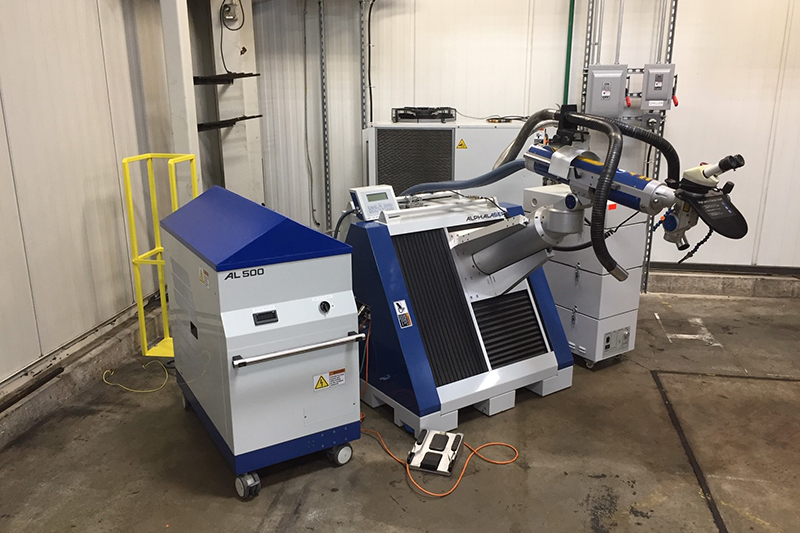Laser welds are indispensable across various industries and precious in scenarios requiring intricate repairs, mold adjustments, and precise revisions. The advanced welding technique allows for exceptional results, making it ideal for applications where traditional welding methods fall short. Whether working on minute parts requiring high precision or handling sensitive components, laser welding is reliable and accurate.
- Achieves Precision
Laser welding stands out for its remarkable detailing, a key advantage in applications where even the slightest error can have significant consequences. The technology uses a concentrated beam of light that can focus on a tiny spot, often less than a millimeter in diameter. That allows for accurate welds, joining delicate and intricate parts without affecting the surrounding material.
Advanced laser systems integrate with features like computer-controlled positioning and real-time monitoring, ensuring consistent weld quality and accuracy. By achieving such high levels of detailing, reliable laser welding solutions provide a reliable option for complex welding tasks that demand exact standards. The precision ensures that the welds are smooth and clean, with minimal post-processing, contributing to the final product’s structural integrity and visual appeal.
- Minimal Heat Affected Zone (HAZ)
Laser welding’s ability to create a minimal heat-affected zone is crucial in applications where heat sensitivity and material integrity are essential. Laser technology delivers energy precisely by focusing a concentrated light beam on a small area, limiting heat exposure to surrounding materials.
Also, its rapid heating and cooling cycle reduces the material’s exposure time to high temperatures. Consequently, it helps reduce the risk of hot cracking, a type of weld defect that can occur when the material cools too rapidly. That minimizes distortion and prevents damage, maintaining the material’s original properties. A minimal heat zone in welding is vital in industries like aerospace, medical welding , and electronics, where even slight changes can compromise functionality.
- A Highly Versatile Welding Technique
Laser welding is a valuable, modern bonding method that stands out due to its adaptability across different materials, applications, and environments. The flexibility allows it to apply to various welding materials, including metals like steel and aluminum, as well as ceramics and plastics. Such versatility is particularly beneficial for repair and revision tasks, making laser welding a preferred choice for heterogeneous structures.
The capability helps meet various manufacturing and repair needs across different sectors. Also, laser welding works well in diverse environments, from clean rooms to industrial settings, further enhancing its applicability and making it a valuable tool for various specialized applications.
- Enhances Welding Speed
Laser welding significantly boosts welding speed by enabling faster processing times than traditional methods. The efficiency stems from various parameters such as;
- The focused delivery of concentrated energy quickly melts materials with minimal preparation and post-processing.
- The rapid heating and cooling reduce welding times substantially and streamlines the process.
- Automation enhances speed with robots and computer-controlled systems performing operations swiftly and consistently.
Also, laser welding reduces the need for extensive finishing work and requires minimal material removal before and after welding. Such rapid turnaround is crucial in high-demand industries where downtime impacts productivity and costs. However, skilled companies like Micro Weld are essential in optimizing these advantages, ensuring quick turnaround without compromising quality.
- Possibility of Automated Laser Welding
Automated laser welding offers significant advantages in modern manufacturing by ensuring consistent quality and reducing human error. Robots and computer systems help to maintain uniform welding parameters, leading to precise and repeatable results crucial for high-precision industries such as aerospace, automotive, and electronics. Automation speeds up production, increases efficiency, and enhances workplace safety by handling hazardous materials or environments with minimal human involvement.
Furthermore, automated welding systems provide flexibility to accommodate various welding tasks, materials, and component sizes while delivering improved precision for complex welds. Overall, automation in laser welding streamlines the processes, enhances the welding rate, and maintains high-quality standards. That helps keep the size and improve the integrity and functionality of even the most delicate parts.
In conclusion, laser welding transforms industries by delivering unmatched precision for medical devices and rapid, efficient welding for high-volume mass production. However, partnering with a reliable welding company like Micro Weld with extensive capabilities and expertise is crucial to fully leveraging these benefits. That ensures you achieve the meticulous standards for critical applications and the efficiency needed for large-scale production.
Keep an eye for more latest news & updates on Gossips!




